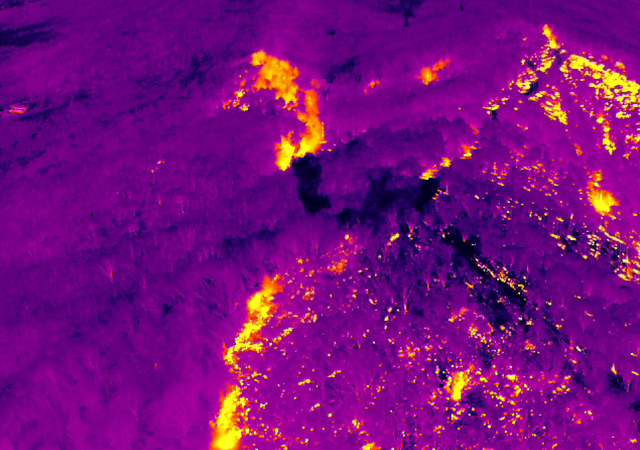Infrared technology has revolutionized various fields, offering a range of applications in industries such as surveillance, medical imaging, and fire detection systems. At the heart of this technology lies the efficient combination of infrared detectors, thermal modules, and high-resolution infrared camera cores. In this article, we delve into the workings of infrared technology and explore the significance of specifications like 640x512/12um and 1280x1024/12um.
Understanding Infrared Technology:
Infrared radiation, or heat radiation, exists beyond the visible light spectrum and is invisible to the human eye. Infrared technology utilizes specialized devices to detect and measure this radiation, opening up new possibilities for analysis and imaging.
Infrared Detector
An infrared detector is the primary component responsible for sensing and measuring infrared radiation. It converts the infrared energy into an electrical signal. In fire detection systems, infrared detectors play a crucial role in identifying abnormal levels of infrared radiation associated with heat and fire. They are designed to achieve high sensitivity and accuracy in detecting temperature variations.
Thermal Module
A thermal module is a compact unit that integrates an infrared detector with advanced signal processing capabilities. It allows for efficient capturing and interpretation of thermal data. The module can be seamlessly integrated into various applications, providing real-time thermal imaging capabilities. Its compact size and modular design make it suitable for integration into different devices or systems.
Infrared Camera Core
The infrared camera core, also known as a thermal imaging camera core, lies at the heart of any infrared camera system. It consists of an infrared detector, optics, and signal processing components. The camera core captures infrared radiation and converts it into a visible thermal image or video. The resolution of the camera core determines the level of detail and clarity in the thermal image. Specifications like 640x512/12um and 1280x1024/12um indicate the options available for resolution, pixel sizes, and image dimensions in the infrared camera core.
Significance of Resolution and Pixel Size
The resolution of an infrared camera core is determined by the number of pixels on the image sensor. Higher-resolution cores, such as the 640x512 and 1280x1024 options, provide more detailed thermal images. These images capture a greater number of data points, enabling enhanced analysis and interpretation.
The pixel size, specified as 12um, refers to the physical size of each pixel on the image sensor. A smaller pixel size allows for higher resolution and finer details in the thermal image. It ensures accurate detection and provides a clearer picture of temperature variations, aiding in precise analysis.
Applications
Infrared technology finds applications in various sectors, including:
1.Fire Detection Systems
Early fire detection is crucial to prevent disasters. Infrared detectors and thermal imaging modules are integrated into fire detection systems, employing real-time thermal imaging to identify heat patterns and trigger alarms.

2.Surveillance and Security:
Infrared cameras equipped with high-resolution cores enable effective surveillance in low-light conditions or complete darkness. They can detect body heat signatures, ensuring enhanced security.

3.Medical Imaging:
Infrared technology is used in medical imaging to capture thermal signatures, providing insights into circulation, inflammation, and potential health issues.

4.Energy Efficiency
Infrared technology assists in identifying areas of energy loss in buildings by detecting temperature differences, aiding in effective energy management.
Infrared technology has revolutionized several industries, providing advanced thermal imaging capabilities. Infrared detectors, thermal modules, and high-resolution camera cores work together to capture and analyze infrared radiation, enabling various applications such as fire detection, surveillance, medical imaging, and energy efficiency. The specifications like 640x512/12um and 1280x1024/12um indicate the resolution and pixel size options available in infrared camera cores, offering higher accuracy and detailed thermal images. As technology continues to advance, we can expect further innovations in the realm of infrared technology, contributing to a safer and more efficient world.
Go Top